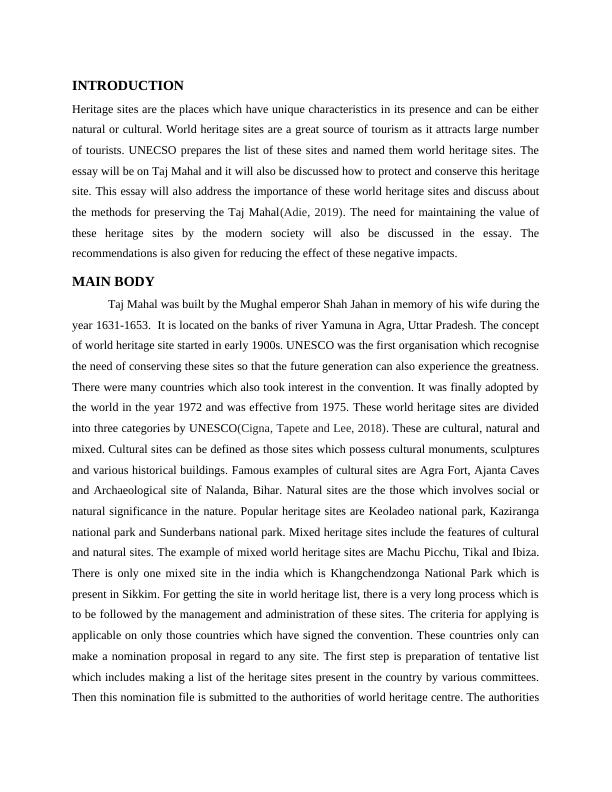Preserving and Conserving Taj Mahal as a World Heritage Site
7 Pages1783 Words241 Views
Added on 2023-06-09
About This Document
This essay discusses the importance of preserving and conserving Taj Mahal as a world heritage site. It also addresses the negative impacts and provides recommendations for reducing them.
Preserving and Conserving Taj Mahal as a World Heritage Site
Added on 2023-06-09
ShareRelated Documents
End of preview
Want to access all the pages? Upload your documents or become a member.
Conservation and Protection of Taj Mahal as a World Heritage Site
|6
|1933
|129
World Heritage Sites: History, Types, Selection, and Impacts on Tourism
|6
|2134
|165
Preservation and Importance of World Heritage Sites
|7
|1909
|238
Importance of Maintaining World Heritage Sites for Modern Society
|7
|1960
|401
Importance of World Heritage Sites in Modern Society
|7
|1790
|277
World Heritage Sites - Taj Mahal
|9
|824
|305



